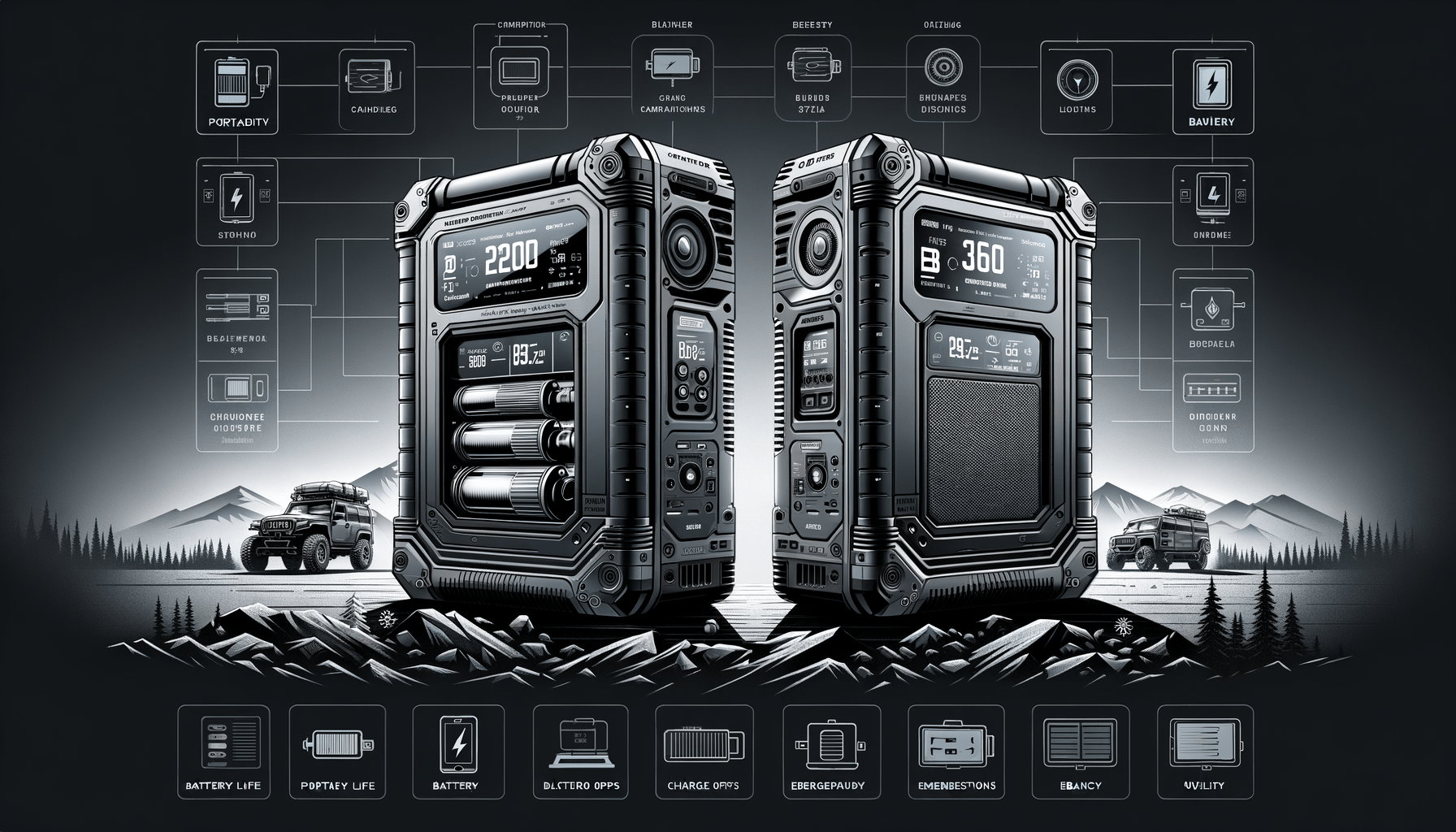Whether you’re a weekend warrior hitting the trails, a digital nomad in need of a power boost, or simply prepping for emergency power outages at home, there’s no denying the value of a trusty portable power station. In this in-depth article, we’re pitting the EcoFlow River against the Jackery Explorer 290 to help you decide which power station best suits your needs.
Power Capacity and Output
Ultimately, the heart of a portable power station is its capacity and output. The EcoFlow River boasts a 288Wh battery capacity with an impressive 600W continuous and 1200W surge max AC output. It also features 3 AC outlets with Pure Sine Wave technology for clean, stable power. Conversely, the Jackery 290 has a slightly larger 290Wh battery capacity yet offers a modest 200W continuous output with a 400W surge peak, alongside a single AC outlet.
| EcoFlow River | Jackery 290 | |
|---|---|---|
| Capacity | 288Wh | 290Wh |
| Continuous Output | 600W | 200W |
| Surge Output | 1200W | 400W |
| AC Outlets | 3 | 1 |
Charging and Solar Compatibility
Both power stations support solar charging—an eco-friendly feature for the energy-conscious. EcoFlow rapidly charges using its X-Stream Fast Charging, hitting 80% in under an hour, and can plug into solar panels up to 200W. Jackery takes a leisurely approach, requiring approximately 5 hours with its compatible 100W SolarSaga panel. Unique to EcoFlow, the X-Boost technology makes it compatible with 80% of home appliances.
| EcoFlow River | Jackery 290 | |
|---|---|---|
| Solar Panel (Max) | 200W | 100W |
| Time to Full Charge (Solar) | Under 3 hrs | Approx. 5 hrs |
| X-Stream Fast Charging | Yes | No |
| X-Boost Technology | Yes | No |
Portability and Design
Design-wise, both units are built for the outdoors. The EcoFlow River is relatively heavier at 11 lbs but compensates with a broader array of ports including USB-A, USB-C, and DC outlets. Jackery’s 290 model is lighter at 7.5 lbs, making it slightly more portable. Its display is user-friendly, clearly showing battery status and output which can be a real game-changer when you’re managing power in the wild.
| EcoFlow River | Jackery 290 | |
|---|---|---|
| Weight | 11 lbs | 7.5 lbs |
| USB-A Ports | 2 | 2 |
| USB-C Ports | 1 | 0 |
| DC Outlets | 3 | 1 |
| Display Type | Smart | Battery Status/Overall Health |
Expandability and Extras
Now, what if you need more juice? EcoFlow River is expandable with an additional battery, whereas the Jackery 290 is not. This means that with EcoFlow, you can plan for even longer off-grid adventures or more robust emergency backups. Plus, the EcoFlow River can be monitored and controlled via a dedicated app—a touch of modern convenience.
Safety and Reliability
Both brands have a firm handle on safety, each featuring a battery management system to protect against the usual suspects—short circuits, overcurrent, and thermal events. With a life cycle of 500+ cycles to 80% capacity for EcoFlow and 1000 cycles for Jackery, reliability isn’t much of a question; however, the Jackery is ahead with double the cycle life.
| EcoFlow River | Jackery 290 | |
|---|---|---|
| Battery Lifecycle | 500+ cycles to 80% | 1000 cycles to 80% |
| Battery Management System | Yes | Yes |
Summary
Your choice between the EcoFlow River and the Jackery Explorer 290 comes down to aligning features with your particular needs. The River excels in fast charging, expandability, and higher power output, making it ideal for those needing more robust power on the go. The Explorer 290, on the other hand, shines in solar charging efficiency, portability, and cycle life, catering well to users prioritizing long-term reliability and easy carrying. Assess your power needs against these insights, and may the best portable power station win!




Leave a Reply